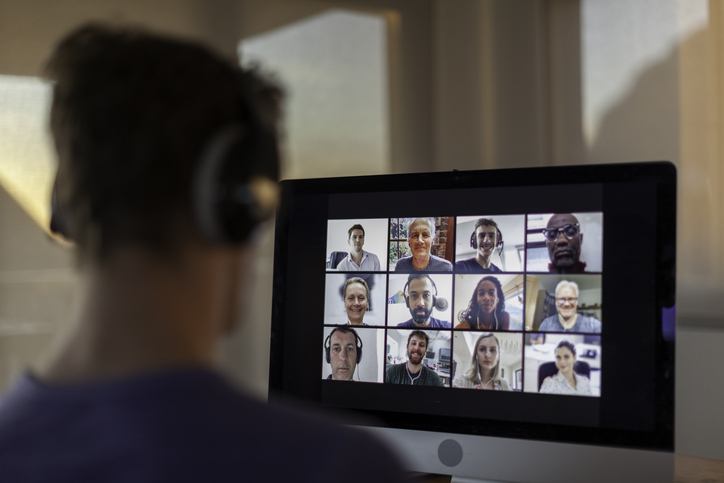
What are the hallmarks of a successful charity?
Each year, the Classy Awards recognise nonprofit organisations that use unique approaches to make a positive impact on our world. Among this year’s winners, joining the likes of Big Brothers Big Sisters of America and the Animal Rescue League of Boston, is Crisis Text Line. Chosen for its “social innovation,” the decade-old organisation offers text-based help for people in crisis.
In their official announcement, Classy notes, “The organisation uses machine learning and data analytics to triage conversations by severity, not time.” This innovation was developed in the digital era to reflect the needs of users increasingly connected by devices. Still relatively young compared to many well-known nonprofits, Crisis Text Line is an example of a successful nonprofit that saw a real need and used the available technology and resources to shape their solution.
Many charities and nonprofits struggle to reach this level of recognition in early years. So, what can a new board do to increase its chances of connecting with its community, and how can an established organisation develop the flexibility to change direction when needed?
The challenges charities face today
To be successful, charities and nonprofits must have support from donors and members, as well as the work of enthusiastic staff and volunteers. After all, the more effective you are, the better you will be able to deliver your services and make a positive impact. Here are some of the many challenges that nonprofits face:
Financial instability
The Chronicle of Philanthropy’s recent piece on banking failures sums it up. The factors that affect a charity or nonprofit’s bottom line — and its ability to provide services — are particularly tough today: inflation, lackluster stock market performance, low consumer confidence, unemployment. Patrick Rooney, a professor of economics and philanthropic studies at the Lilly Family School of Philanthropy at Indiana University, told the Chronicle, “Uncertainty is the enemy of investment in the capitalistic sector, but it’s also the enemy of investment in the philanthropic sector.”
Mission creep
Organisations may take on efforts tangentially or even tackle issues unrelated to their missions for a variety of reasons, from well-intentioned supporter requests to attempts at increasing impact on its area of service. Whatever the origin, mission creep can put a strain on an organsation’s resources and alienate supporters.
Cyber Risk
Public and nonprofit entities are a particular target for cyber criminals due to their perceived lack of IT security resources. A late 2021 attack against the International Committee for the Red Cross targeted servers that held over half a million individuals’ records. Small size is no protection, either. A Security magazine piece notes, “It can be tempting to think that just because a nonprofit is small, they’re under the radar of any cybercriminals looking to make a buck. But the truth is that these qualities make them the exact target they’re looking for.”
Demand for Digital Transformation
Tolerance for out-of-date technology is running low for all audiences. Modern digital solutions exist for a growing number of needs — whether it’s to strengthen your charity’s sustainability reputation through efficient online interactions or to manage donations, distribution, training or whatever services your organisation provides. Deciding which solutions to pursue and when is a significant challenge for any not-for-profit board.
Trust and Transparency
Charities and nonprofits must uphold the highest standards of trust and transparency. Hard questions about budgets, priorities, board make-up and the decision-making process have thrown more than one mission-driven organisation off-course.
Missteps in the above areas can cause donors and volunteers to limit or withdraw support.
Board effectiveness reflects the board’s ability to deliver on its mission and achieve its goals. The Board Effectiveness Checklist, organised into key areas, will help your nonprofit board operate even more effectively. Download the checklist now!
———————————————————————————————–
What makes a charity and its board successful?
The key elements of a successful charity are the direct result of a successful board. Let’s consider these factors.
Governance best practices
Successful charity and nonprofit boards follow and regularly adopt governance best practices – from ensuring their organisations meet regulatory requirements to avoiding conflicts of interest and making decisions based on up-to-date information.
A culture of collaboration
It almost goes without saying: a board that embodies mutual respect, humility and open-mindedness will have greater success when it comes to reaching consensus. Beyond that, a board should have an orderly process for discussion and decision-making — one that ensures every board member is up to speed on current issues and ready collaborate effectively to achieve the organisation’s aims.
The right data
When it comes to data, there are two critical elements:
- the board needs up-to-date, accurate, usable information
- the data and information should be found easily.
Board members may find themselves focusing on the wrong data or trying to find information that may be lost in network folders, emails or piles of paper at home or in an office. A successful board should be able to access any relevant data (current statistics, previous meeting minutes, etc.) at a moment’s notice.
Thoughtful onboarding and continuous training for board members
Board members are brought in for a variety of areas of skill and expertise, but they likely have different experiences of serving on different boards. Having a process in place for educating new trustees on strategic goals, meeting processes, and board tools is important to setting them up for success. Embracing continuous learning is one way board members can ensure their organisation’s success.
An effective board
The factors above contribute to the effectiveness of a nonprofit and its board. When a board can collaborate using the right (shared) data and processes, regular check-ins become an automatic part of the board’s focus, which allows the team to remain in step on the organisation’s goals, progress and mission. With effective agenda management, there is time for both direct work on an organisation’s goals, as well as self-evaluation and improvement for the board.
Innovation
If demand for digital transformation is a challenge for today’s charities and nonprofits, it is also an opportunity — for board members, staff, volunteers and supporters to show flexibility in ideation and problem-solving. The adoption of smart technology solutions can support this transformation while also allowing nonprofits to deliver their services more effectively.
Boards must be prepared to measure their impact against these factors and more.
The role technology plays in charity success
Unsurprisingly, technology plays a significant role in the success of mission-driven organisations and boards. Board management software can ease onboarding, ensure board members are working with the same accessible data, safeguard the decision-making process and foster innovation by removing barriers to collaboration.
An effective board steers a mission-driven organisation in the right direction and inspires staff, volunteers, supporters and the public.
If you would like to learn more about how BoardEffect can support your charity’s success, we’d love to speak with you! Request a demo and let us share how we help more than 5,000 boards in 48 countries.
BoardEffect, a Diligent solution, leads in providing innovative boardroom technology to nonprofit organizations. Serving 14,000 mission-driven organisations, Diligent empowers boards with tools to drive positive change. Our secure board management software streamlines operations, enhances governance practices, and enables confident decision-making. With BoardEffect, mission-driven organisations unlock potential, accelerate mission delivery and make a lasting impact in their communities.







